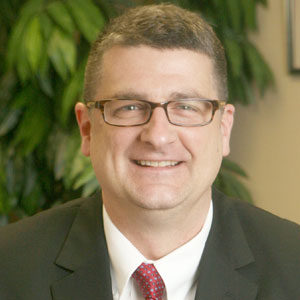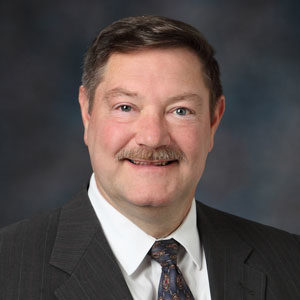COVID Exposes Need to Address Long Standing Facilities Inequities in Rural Schools
By Michael Ginalski
 It is often said that crisis creates opportunity. Another thing that crisis definitely creates is a bright shining light on inequities across society. The last 18 months of the coronavirus have demonstrated that State and Federal lawmakers must make a financial commitment to address the long standing facilities inequities that our rural schools have experienced for decades. Rural schools are often the hub of their community and these districts provide a great product to the citizens and children of those communities often doing the most with the least. However, schools and districts in rural areas face a number of issues with their facilities including the age of buildings, a lack of 21st century technology infrastructure, a lack of energy efficiency, and various environmental issues all of which were fully exposed during the pandemic. This does not even begin to address educational needs as basic infrastructure needs continue to be a high priority. These issues are not easily solved as rural districts have lower bonding capacities and leaders who wear many hats so financing, developing, and managing a facilities project is very challenging.
It is often said that crisis creates opportunity. Another thing that crisis definitely creates is a bright shining light on inequities across society. The last 18 months of the coronavirus have demonstrated that State and Federal lawmakers must make a financial commitment to address the long standing facilities inequities that our rural schools have experienced for decades. Rural schools are often the hub of their community and these districts provide a great product to the citizens and children of those communities often doing the most with the least. However, schools and districts in rural areas face a number of issues with their facilities including the age of buildings, a lack of 21st century technology infrastructure, a lack of energy efficiency, and various environmental issues all of which were fully exposed during the pandemic. This does not even begin to address educational needs as basic infrastructure needs continue to be a high priority. These issues are not easily solved as rural districts have lower bonding capacities and leaders who wear many hats so financing, developing, and managing a facilities project is very challenging.
As we saw the stories of students having to connect to the internet for virtual school at the local volunteer fire department or in front of the local McDonald’s, as a nation we were horrified. Children in the United States of America in the 21st century should have broadband access. However, many of our rural communities do not which creates quite the uneven playing field in comparison with students from urban and higher population centers. While our rural schools do have access to internet, access to devices is limited. Trying to learn from a teacher who is instructing from a cell phone is not the same as having a laptop device with high speed internet. Technology access in the rural school environment is just one of the myriad of infrastructure issues brought into the open by COVID. Is a 1:1 computer initiative possible in a rural school? Possibly, but many rural schools are older and were not built to support the infrastructure to power and utilize an entire building logging onto the internet simultaneously.
Air filtration issues became a very high priority during COVID as the coronavirus is airborne. Because of this, well functioning air ventilation systems were a must. This proved to be challenging in some schools because the existing infrastructure was not designed to do what State education departments and health departments directed schools to do. The issue of air conditioning in schools became a hot topic this Spring as temperatures increased. Students were in masks as directed and keeping doors and windows open is not the option that it once was because of school safety concerns.
But, there is a path forward. First and foremost is the creation of a solid five to ten year facilities plan. At Welliver, we can help rural districts develop Facility Master Plans and the technical assistance to begin to attack these issues in rural schools. This includes assessing existing facility conditions and educational needs and capital funding opportunities. In rural districts, districts leaders often have multiple direct responsibilities unlike district leaders in larger districts. Employing a Construction Manager (CM) who can act as the agent of the school district in all aspects of planning and implementation is a must. Maximizing dollars is paramount. In smaller rural districts the CM can work with the district’s architect ensuring that plans are developed that not only meet all identified needs but do so in the most cost effective manner possible.
The recent stimulus funding to districts was a nice start to begin to help our rural school districts. However, as Federal leaders are actively negotiating an infrastructure program for the US, which includes roads and bridges, it is crucial that additional funding for rural schools be part of that package. During the pandemic, all school districts were deemed responsible to not only provide daily instruction and social emotional support but to also feed students while in a crisis. This demonstrates the importance of schools in American society. Rural schools are the center of their communities and future investment is crucial to ensure kids in those communities have an equal opportunity to their peers in larger and richer communities.
Our rural school districts in the State should stand up in pride for the job they do every day for the communities and children they serve. Rural schools are not broken or deficient. Frankly, these communities often support their schools and districts at a higher level than larger schools and districts. This is not a zero sum game and doesn’t mean more affluent or larger districts should suffer. However, rural communities deserve the same 21st century facilities that other communities have. COVID exposed the inequities further and the time is right to fix these long standing issues.
Mike joins Welliver as our K12 Communication Liaison after 33 years working in the K12 education sector. He brings a comprehensive understanding and direct exposure to all of the issues facing public education today. In his 13 years as the Superintendent in Corning-Painted Post (CPP) Area School District, Mike led the district through four successful referendums which led to $260M in new construction from 2010-2020. Mike bridges the gap between Welliver’s construction management teams and K12 school district superintendents, school boards, and facility directors. He provides expertise and guidance, as well as helps districts carry out capital improvement initiatives involving pre-referendum voting, budget management, community outreach, and buildings and grounds personnel. Mike can be reached at [email protected].






 As construction companies, we find ourselves not only being committed to our client’s success but also committed to the safety and welfare of our employees and the entire worksite.
As construction companies, we find ourselves not only being committed to our client’s success but also committed to the safety and welfare of our employees and the entire worksite.